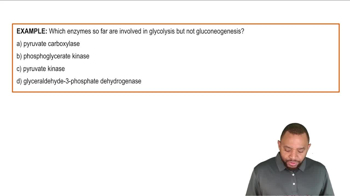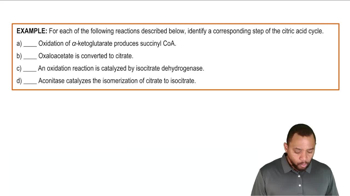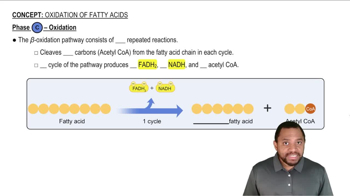Textbook Question
Consider the complete oxidation of capric acid, a saturated fatty acid, [10:0].
c How many ATP are generated from the complete oxidation of capric acid?
18
views
 Verified step by step guidance
Verified step by step guidance



Consider the complete oxidation of capric acid, a saturated fatty acid, [10:0].
c How many ATP are generated from the complete oxidation of capric acid?
Consider the complete oxidation of arachidic acid, a saturated fatty acid, [20:0].
b. How many cycles of β oxidation occur?
Lauric acid, a saturated fatty acid, [12:0], is found in coconut oil.
e. How many cycles of β oxidation occur?
ALLIED HEALTH Excess nitrogen in the body can form uric acid crystals responsible for the painful condition called gout (see the Integrating Chemistry feature in Section 8.2). Besides proteins, name a biomolecule synthesized in the body that uses nitrogen.